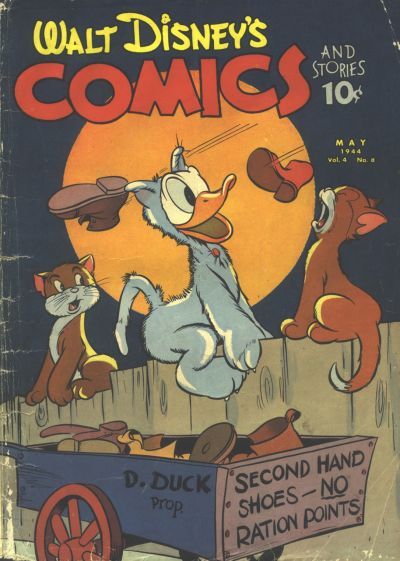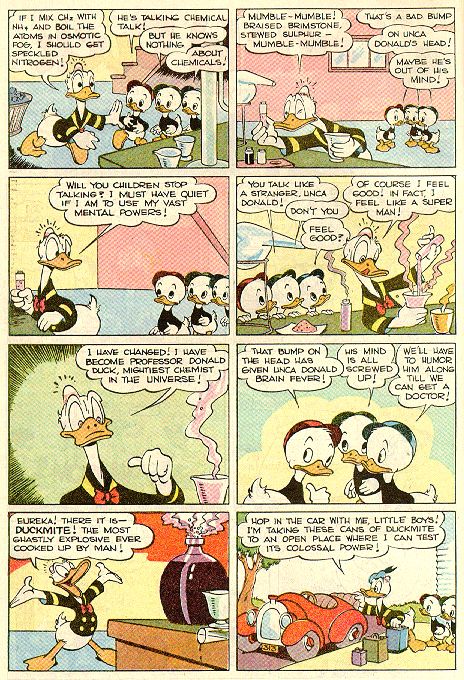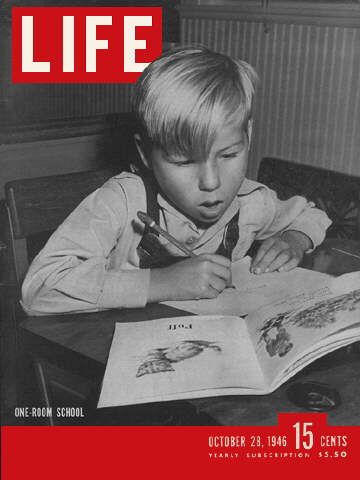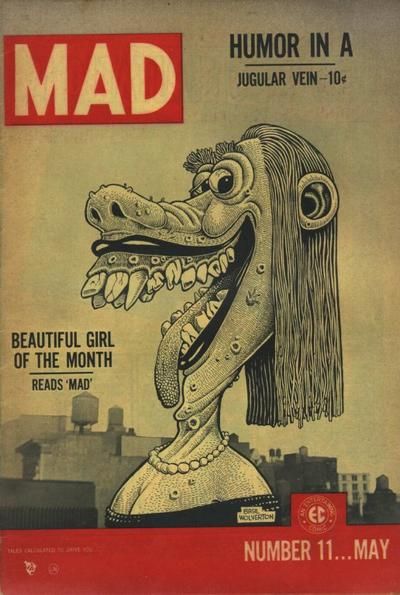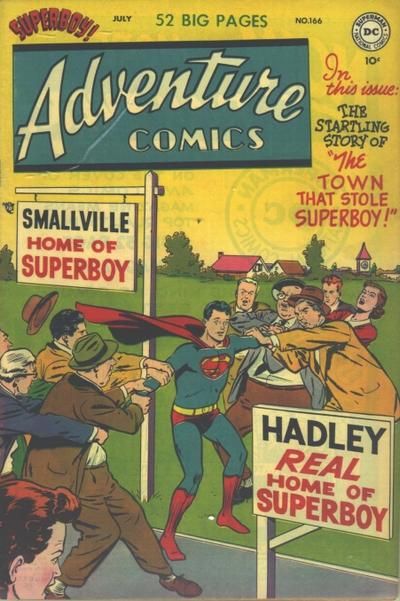This is the eighty-seventh in a series of examinations of comic book urban legends and whether they are true or false. Click here for an archive of the previous eighty-six. Click here for a similar archive, only arranged by subject.
Let's begin!
COMIC URBAN LEGEND: Donald Duck discovered methylene.
STATUS: True, in a manner of speaking
As established in a previous Comic Book Urban Legends Revealed, Carl Barks was a real master of coming up with realistic sounding scientific facts, even when he was completely fabricating them. In fact, he paid such close attention that, as detailed in the earlier installment, a process he detailed in an issue of Donald Duck apparently led to an inventor being denied a patent, because his process was so similar to Barks'.
Barks was not just involved in coming up with interesting processes, but he also stumbled on to some interesting discoveries in chemistry, as well, in 1944's Walt Disney Comics and Stories #44 (note the reference on the cover to rationing - sure takes you back, huh?).
Daniël van Eijmeren's amazing website, the Guide to the Carl Barks Universe, gives us some details on to exactly what significance there was in the Barks stories in this issue, titled "The Mad Chemist":
In 1963, the Disney Studio learned just how wide and faithful a readership Barks had. A letter arrived from Joseph B. Lambert of the California Institute of Technology, pointing out a curious reference in "The Spin States of Carbenes," a technical article soon to be published by P.P. Gaspar and G.S. Hammond (in Carbene Chemistry, edited by Wolfgang Kirmse, New York: Academic Press, 1964). "Despite the recent extensive interest in methylene chemistry," read the article's last paragraph, "much additional study is required.... Among experiments which have not, to our knowledge, been carried out as yet is one of a most intriguing nature suggested in the literature of no less than 19 years ago (91)." Footnote 91, in turn, directed readers to issue 44 of Walt Disney's Comics and Stories. It seems Donald's reference to CH2 in panel 2.1 was years ahead of its time: the existence of this elusive chemical intermediate had not been proven in 1944.
"The inclusion of this footnote in a quite scholarly article," Lambert explained, "stemmed from the discovery that Dr. Gaspar ... and I shared a mutual, and independently long-standing esteem for the adventures of Donald Duck. We both had retained copies of some of the classic adventures. It was Dr. Gaspar who rediscovered this early mention of carbene."
Other members of the scientific community sought out the reference. A year later, the Studio received a letter from Richard Greenwald, a scientist at Harvard. "Recent developments in chemistry have focused much attention to species of this sort," Greenwald commented. "Without getting technical let me say that carbenes can be made but not isolated; i.e. they cannot be put into a jar and kept on a shell. They can, however, be made to react with other substances. Donald was using carbene in just such a manner, many years before 'real chemists' thought to do so."
The telltale panel has since been used to illustrate an article by Robert A. Moss ("Carbene Chemistry," Chemical and Engineering News, 16 June 1969) and a textbook by Robert Morrison and Robert Boyd (Organic Chemistry, 3rd Edition, Boston: Allyn and Bacon, 1973).
F. James Holler and John P.Selegue, in their excellent website, The Periodic Table of Comic Books, also examine the issue, and tell about how it was the first published mention of methylene!
Courtesty of Holler and Selegue, here is a page from the issue in question:
Pretty neat, huh?
COMIC URBAN LEGEND: Basil Wolverton's visualization of Lena the Hyena was such a big deal, it even made the cover of Life magazine!
STATUS: False
Recently, there was a little bit of a glimpse into how seriously some people take their comic strips, when Rich Johnston linked folks to a discussion board discussing some storyline in For Better of For Worse, but it is interesting to note that there used to be the days when it was simply a natural way of life for comic strips to be a big part of people's lives, like Al Capp's Li'l Abner comic strip, which Capp populated with all sorts of absurd characters, but few were as odd as Lena the Hyena, the world's ugliest woman, who Capp first introduced with her face covered up, with the gag being that it would be unfair to the readers to show such a hideous face.
The character was a huge success with fans, and soon, people were clamoring to see what she looked like, so Capp decided to hold a contest - cartoonists would send in their depictions of what Lena would look like, and an expert panel (made up of, of all people, Salvador Dali, Frank Sinatra and Boris Karloff! Doesn't that sound like the beginning of a joke? "Salvador Dali, Frank Sinatra and Boris Karloff walk into a bar...") would decide who won.
The winning entry was by noted comic artist Basil Wolverton, who was not AS noted back then, but he soon became known after his winning entry was first published in the October 28th issue of Life magazine in 1946.
Here, courtesy of Don Markstein's excellent Toonopedia, is Wolverton's visualization of Lena...
Isn't that stunning?
However, it is interesting to note how, as time passed, the lore of Lena the Hyena grew, sort of like a game of telephone, and as a reader wrote in to mention to me (I'd tell you the reader's name, but I don't have it - and posting his/her e-mail address seems tacky, no?) that now the story was that Lena the Hyena by Wolverton appeared on the COVER of Life magazine, which would be a tremendous feat for a cartoonist in the 1940s!
However, this was not the case.
Here is the cover for the issue featuring Lena's debut...
Just a photograph by Bernard Hoffman.
In fact, Wolverton never had a drawing grace the covers of Life magazine, although that does not really dampen his resume, it just never happened.
Most likely, folks just confused the following Mad cover, from issue #11...
and somehow a PARODY cover has been replayed into people's minds over time as an ACTUAL cover.
Funny, eh?
Thanks to reader John Thorpe for the suggestion!
COMIC URBAN LEGEND: Smallville was established in a Superboy comic as being located on the East Coast.
STATUS: True
When reader John McDonagh (thanks, John!) passed this one on to me awhile back, it sounded pretty far-fetched to me.
I mean, Smallville, home of Superboy, has just GOT to be a midwest town, right?
Where else could it be?
As it turns out, though, through the years, the books kept it pretty vague as to where Smallville was actually located, until finally, in a letter column in an early 60s issue of Adventure Comics, as discovered by noted comic historian, Bob Hughes, editor Mort Weisinger told the audience, "We have never established definitely which state it is," but that Smallville is a suburb in an Eastern State of the United States. Definitely not Kansas.
How trippy is THAT?
Okay, that's it for this week!
Feel free to drop off any urban legends you'd like to see featured!


